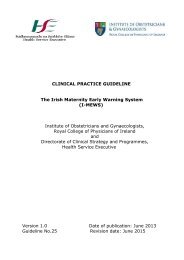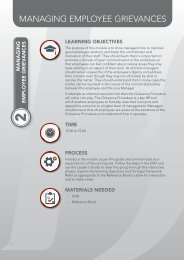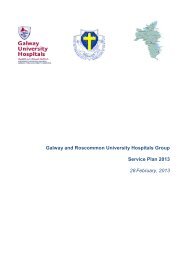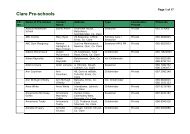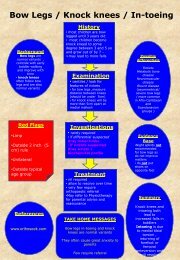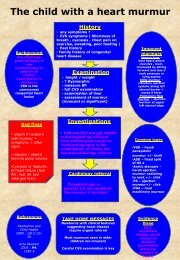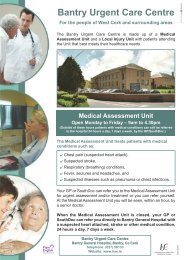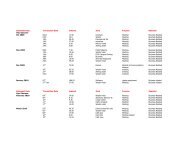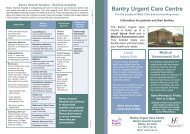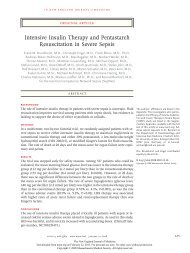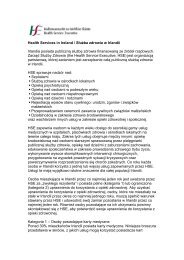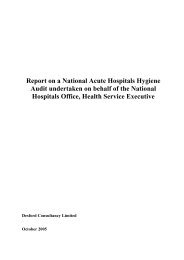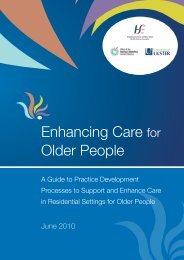Child Protection and Welfare Practice Handbook - Health Service ...
Child Protection and Welfare Practice Handbook - Health Service ...
Child Protection and Welfare Practice Handbook - Health Service ...
Create successful ePaper yourself
Turn your PDF publications into a flip-book with our unique Google optimized e-Paper software.
Introduction to the <strong>Practice</strong> H<strong>and</strong>book<br />
• Delay in healthcare – the failure to seek timely <strong>and</strong> appropriate<br />
medical care for a serious health problem that any reasonable person<br />
would have recognised as needing professional medical attention.<br />
Examples of a delay in healthcare include not getting appropriate<br />
preventive medical or dental care for a child, not obtaining care for a sick<br />
child or not following medical recommendations.<br />
Homelessness <strong>and</strong> neglect<br />
• Unstable living conditions can have a negative effect on children<br />
<strong>and</strong> homeless children are more at risk for other types of neglect in<br />
areas such as health, education <strong>and</strong> nutrition. Homelessness can be<br />
considered neglect when the inability by a parent or carer to provide<br />
shelter is the result of not managing their finances appropriately <strong>and</strong><br />
there is evidence that the money has been spent not on rent but<br />
on drugs or alcohol, or the family had been engaged in anti-social<br />
behaviour leading to eviction.<br />
Inadequate supervision<br />
Inadequate supervision encompasses a number of behaviours, including:<br />
Lack of appropriate supervision<br />
There is no defined amount of time children at different ages can be left<br />
unsupervised <strong>and</strong> the guidelines for these ages <strong>and</strong> times vary. In addition,<br />
all children are different, so the amount of supervision needed may vary<br />
by the child’s age, development or situation. It is important to evaluate<br />
the maturity of the child, the accessibility of other adults, the duration <strong>and</strong><br />
frequency of unsupervised time, <strong>and</strong> the neighborhood or environment<br />
when determining if it is acceptable to leave a child unsupervised.<br />
Exposure to hazards<br />
Examples of exposure to in- <strong>and</strong> out-of-home hazards include:<br />
• Safety hazards – poisons, small objects, electrical wires, stairs <strong>and</strong><br />
drugs.<br />
• Smoking – second-h<strong>and</strong> smoke, especially for children with asthma<br />
or other lung problems.<br />
• Guns <strong>and</strong> other weapons – guns that are kept in the house <strong>and</strong><br />
are not locked up.<br />
• Unsanitary household conditions – rotting food, human or animal<br />
•<br />
faeces, insect infestation or lack of running or clean water.<br />
Lack of child safety restraints.<br />
17



